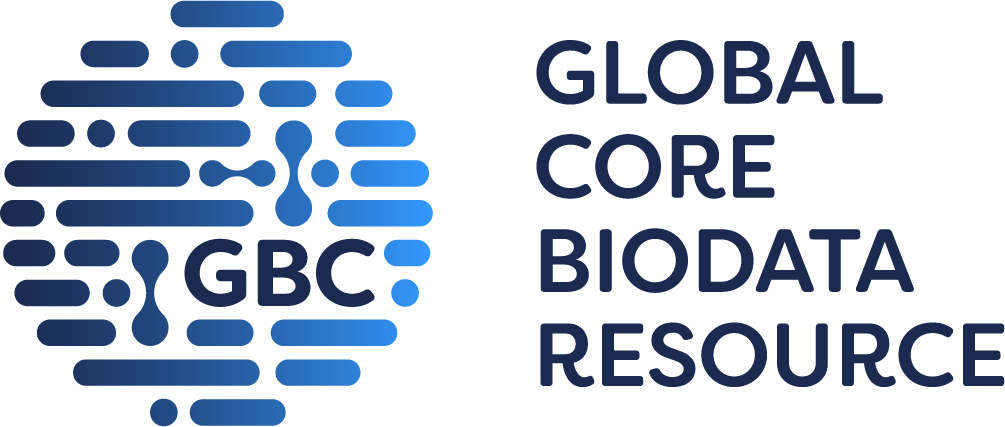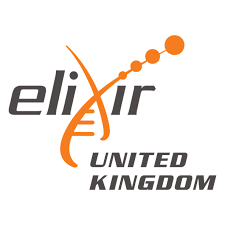
RKI-1447 [Ligand Id: 8152] activity data from GtoPdb and ChEMBL
Click here for a description of the charts and data table
Please tell us if you are using this feature and what you think!
| ChEMBL ligand: CHEMBL3218011 |
|---|
There should be some charts here, you may need to enable JavaScript!
|
There should be some charts here, you may need to enable JavaScript!
|
|
There should be some charts here, you may need to enable JavaScript!
|
|
There should be some charts here, you may need to enable JavaScript!
|
|
There should be some charts here, you may need to enable JavaScript!
|
|
There should be some charts here, you may need to enable JavaScript!
|
|
There should be some charts here, you may need to enable JavaScript!
|
|
There should be some charts here, you may need to enable JavaScript!
|
| DB | Assay description | Assay Type | Standard value | Standard parameter | Original value | Original units | Original parameter | Reference |
|---|---|---|---|---|---|---|---|---|
| Rho associated coiled-coil containing protein kinase 1/Rho-associated protein kinase 1 in Human (target type: SINGLE PROTEIN) [ChEMBL: CHEMBL3231] [GtoPdb: 1503] [UniProtKB: Q13464] | ||||||||
| ChEMBL | Inhibition of ROCK1 (unknown origin) | B | 7.84 | pIC50 | 14.5 | nM | IC50 | Eur J Med Chem (2021) 215: 113268-113268 [PMID:33636537] |
| ChEMBL | Inhibition of ROCK1 (unknown origin) | B | 7.84 | pIC50 | 14.5 | nM | IC50 | J Med Chem (2016) 59: 2269-2300 [PMID:26486225] |
| ChEMBL | Inhibition Assay: Attention was focused on exploring, in turn, the SAR around the phenyl ring A, branching and substitution at the benzylic position, urea linkage of 1aa, without varying the [4-(4-pyridinyl)-2-thiazolyl] terminus (FIG. 4). The [4-(4-pyridinyl)-2-thiazolyl] group was believed to act as a hinge-binding moiety with the nitrogen of the pyridyl H-bonding to the back bone NH of the hinge Met156, as seen in the crystal complex of ROCK1 with Fasudil (PDB ID 2ESM) (Jacobs, et al., The structure of dimeric ROCK I reveals the mechanism for ligand selectivity, J Biol Chem, 2006, 281:260-8).All compounds were systematically screened against ROCK1 and ROCK2. IC50 values were systematically determined only for compounds that inhibit 40% of ROCK1 kinase activities at 50 μM. | B | 7.89 | pIC50 | 13 | nM | IC50 | US-9221808-B2. Pyridylthiazole-based ureas as inhibitors of Rho associated protein kinase (ROCK) and methods of use (2015) |
| ChEMBL | Inhibition Assay: Attention was focused on exploring, in turn, the SAR around the phenyl ring A, branching and substitution at the benzylic position, urea linkage of 1aa, without varying the [4-(4-pyridinyl)-2-thiazolyl] terminus (FIG. 4). The [4-(4-pyridinyl)-2-thiazolyl] group was believed to act as a hinge-binding moiety with the nitrogen of the pyridyl H-bonding to the back bone NH of the hinge Met156, as seen in the crystal complex of ROCK1 with Fasudil (PDB ID 2ESM) (Jacobs, et al., The structure of dimeric ROCK I reveals the mechanism for ligand selectivity, J Biol Chem, 2006, 281:260-8).All compounds were systematically screened against ROCK1 and ROCK2. IC50 values were systematically determined only for compounds that inhibit 40% of ROCK1 kinase activities at 50 μM. | B | 8.05 | pIC50 | 9 | nM | IC50 | US-9221808-B2. Pyridylthiazole-based ureas as inhibitors of Rho associated protein kinase (ROCK) and methods of use (2015) |
| ChEMBL | Inhibition of N-terminal GST-tagged ROCK1 (1 to 535) (unknown origin) using KKRPQRRSNVF as substrate after 1 hr by Z-Lyte-based FRET assay | B | 8.1 | pIC50 | 8 | nM | IC50 | Medchemcomm (2012) 3: 699-709 [PMID:23275831] |
| ChEMBL | Inhibition Assay: Attention was focused on exploring, in turn, the SAR around the phenyl ring A, branching and substitution at the benzylic position, urea linkage of 1aa, without varying the [4-(4-pyridinyl)-2-thiazolyl] terminus (FIG. 4). The [4-(4-pyridinyl)-2-thiazolyl] group was believed to act as a hinge-binding moiety with the nitrogen of the pyridyl H-bonding to the back bone NH of the hinge Met156, as seen in the crystal complex of ROCK1 with Fasudil (PDB ID 2ESM) (Jacobs, et al., The structure of dimeric ROCK I reveals the mechanism for ligand selectivity, J Biol Chem, 2006, 281:260-8).All compounds were systematically screened against ROCK1 and ROCK2. IC50 values were systematically determined only for compounds that inhibit 40% of ROCK1 kinase activities at 50 μM. | B | 8.1 | pIC50 | 8 | nM | IC50 | US-9221808-B2. Pyridylthiazole-based ureas as inhibitors of Rho associated protein kinase (ROCK) and methods of use (2015) |
| GtoPdb | - | - | 9 | pIC50 | <1 | nM | IC50 | Medchemcomm (2012) 3: 699-709 [PMID:23275831] |
| Rho associated coiled-coil containing protein kinase 2/Rho-associated protein kinase 2 in Human (target type: SINGLE PROTEIN) [ChEMBL: CHEMBL2973] [GtoPdb: 1504] [UniProtKB: O75116] | ||||||||
| ChEMBL | Inhibition Assay: Attention was focused on exploring, in turn, the SAR around the phenyl ring A, branching and substitution at the benzylic position, urea linkage of 1aa, without varying the [4-(4-pyridinyl)-2-thiazolyl] terminus (FIG. 4). The [4-(4-pyridinyl)-2-thiazolyl] group was believed to act as a hinge-binding moiety with the nitrogen of the pyridyl H-bonding to the back bone NH of the hinge Met156, as seen in the crystal complex of ROCK1 with Fasudil (PDB ID 2ESM) (Jacobs, et al., The structure of dimeric ROCK I reveals the mechanism for ligand selectivity, J Biol Chem, 2006, 281:260-8).All compounds were systematically screened against ROCK1 and ROCK2. IC50 values were systematically determined only for compounds that inhibit 40% of ROCK1 kinase activities at 50 μM. | B | 8.1 | pIC50 | 8 | nM | IC50 | US-9221808-B2. Pyridylthiazole-based ureas as inhibitors of Rho associated protein kinase (ROCK) and methods of use (2015) |
| ChEMBL | Inhibition of ROCK2 (unknown origin) | B | 8.21 | pIC50 | 6.2 | nM | IC50 | Eur J Med Chem (2021) 215: 113268-113268 [PMID:33636537] |
| ChEMBL | Inhibition of ROCK2 (unknown origin) | B | 8.21 | pIC50 | 6.2 | nM | IC50 | J Med Chem (2016) 59: 2269-2300 [PMID:26486225] |
| ChEMBL | Inhibition of N-terminal GST-tagged ROCK2 (1 to 552) (unknown origin) using KKRPQRRSNVF as substrate after 1 hr by Z-Lyte-based FRET assay | B | 8.22 | pIC50 | 6 | nM | IC50 | Medchemcomm (2012) 3: 699-709 [PMID:23275831] |
| ChEMBL | Inhibition Assay: Attention was focused on exploring, in turn, the SAR around the phenyl ring A, branching and substitution at the benzylic position, urea linkage of 1aa, without varying the [4-(4-pyridinyl)-2-thiazolyl] terminus (FIG. 4). The [4-(4-pyridinyl)-2-thiazolyl] group was believed to act as a hinge-binding moiety with the nitrogen of the pyridyl H-bonding to the back bone NH of the hinge Met156, as seen in the crystal complex of ROCK1 with Fasudil (PDB ID 2ESM) (Jacobs, et al., The structure of dimeric ROCK I reveals the mechanism for ligand selectivity, J Biol Chem, 2006, 281:260-8).All compounds were systematically screened against ROCK1 and ROCK2. IC50 values were systematically determined only for compounds that inhibit 40% of ROCK1 kinase activities at 50 μM. | B | 8.22 | pIC50 | 6 | nM | IC50 | US-9221808-B2. Pyridylthiazole-based ureas as inhibitors of Rho associated protein kinase (ROCK) and methods of use (2015) |
| ChEMBL | Inhibition Assay: Attention was focused on exploring, in turn, the SAR around the phenyl ring A, branching and substitution at the benzylic position, urea linkage of 1aa, without varying the [4-(4-pyridinyl)-2-thiazolyl] terminus (FIG. 4). The [4-(4-pyridinyl)-2-thiazolyl] group was believed to act as a hinge-binding moiety with the nitrogen of the pyridyl H-bonding to the back bone NH of the hinge Met156, as seen in the crystal complex of ROCK1 with Fasudil (PDB ID 2ESM) (Jacobs, et al., The structure of dimeric ROCK I reveals the mechanism for ligand selectivity, J Biol Chem, 2006, 281:260-8).All compounds were systematically screened against ROCK1 and ROCK2. IC50 values were systematically determined only for compounds that inhibit 40% of ROCK1 kinase activities at 50 μM. | B | 8.22 | pIC50 | 6 | nM | IC50 | US-9221808-B2. Pyridylthiazole-based ureas as inhibitors of Rho associated protein kinase (ROCK) and methods of use (2015) |
| GtoPdb | - | - | 9 | pIC50 | <1 | nM | IC50 | Medchemcomm (2012) 3: 699-709 [PMID:23275831] |
| DM1 protein kinase in Human [GtoPdb: 1505] [UniProtKB: Q09013] | ||||||||
| GtoPdb | - | - | 7.47 | pIC50 | 34.06 | nM | IC50 | Medchemcomm (2012) 3: 699-709 [PMID:23275831] |
| CDC42 binding protein kinase alpha in Human [GtoPdb: 1507] [UniProtKB: Q5VT25] | ||||||||
| GtoPdb | - | - | 8.54 | pIC50 | 2.87 | nM | IC50 | Medchemcomm (2012) 3: 699-709 [PMID:23275831] |
| protein kinase N1 in Human [GtoPdb: 1520] [UniProtKB: Q16512] | ||||||||
| GtoPdb | - | - | 9 | pIC50 | <1 | nM | IC50 | Medchemcomm (2012) 3: 699-709 [PMID:23275831] |
| myosin light chain kinase in Human [GtoPdb: 1552] [UniProtKB: Q15746] | ||||||||
| GtoPdb | - | - | 7.81 | pIC50 | 15.63 | nM | IC50 | Medchemcomm (2012) 3: 699-709 [PMID:23275831] |
| LIM domain kinase 1 in Human [GtoPdb: 2054] [UniProtKB: P53667] | ||||||||
| GtoPdb | - | - | 8.76 | pIC50 | 1.74 | nM | IC50 | Medchemcomm (2012) 3: 699-709 [PMID:23275831] |
| p21 (RAC1) activated kinase 1 in Human [GtoPdb: 2133] [UniProtKB: Q13153] | ||||||||
| GtoPdb | - | - | 9 | pIC50 | <1 | nM | IC50 | Medchemcomm (2012) 3: 699-709 [PMID:23275831] |
ChEMBL data shown on this page come from version 35:
Zdrazil B, Felix E, Hunter F, Manners EJ, Blackshaw J, Corbett S, de Veij M, Ioannidis H, Lopez DM, Mosquera JF, Magarinos MP, Bosc N, Arcila R, Kizilören T, Gaulton A, Bento AP, Adasme MF, Monecke P, Landrum GA, Leach AR. (2024). The ChEMBL Database in 2023: a drug discovery platform spanning multiple bioactivity data types and time periods. Nucleic Acids Res., 52(D1). DOI: 10.1093/nar/gkad1004. [EPMCID:10767899] [PMID:37933841]
Davies M, Nowotka M, Papadatos G, Dedman N, Gaulton A, Atkinson F, Bellis L, Overington JP. (2015) 'ChEMBL web services: streamlining access to drug discovery data and utilities.' Nucleic Acids Res., 43(W1). DOI: 10.1093/nar/gkv352. [EPMCID:25883136]







